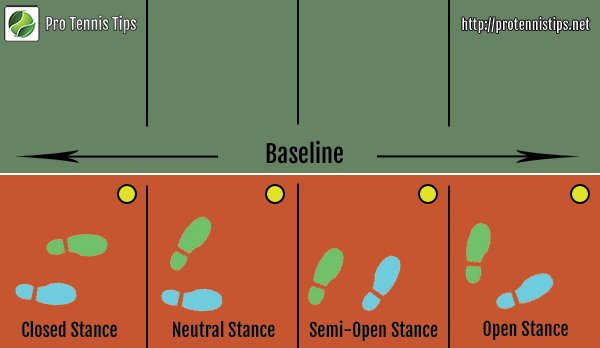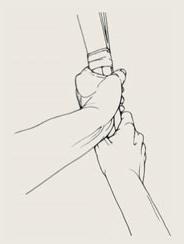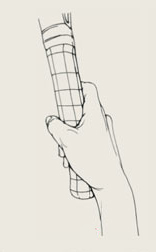How-to: Tennis Backhand
If you’re already familiar with the forehand, we can now move onto the tennis backhand. If you don’t know what a backhand is yet, it’s simply a stroke that is played with the back of the hand facing in the direction of the stroke. Although it’s a little harder to learn than a forehand at first, a good tennis backhand is essential for a complete range of strokes. This is mostly because it provides coverage of your left side for right-handed players and the right side for left-handed players, and if you can’t hit a backhand, you’ll have to run around backhand shots just to hit a forehand, which is simply wasted energy. So, what are you waiting for? Let’s learn the tennis backhand!
How-To: Tennis Backhand
To perform a backhand, you will need to use a Continental grip (the one-handed can use a variety of other grips), and you have the option of either having two hands on the racquet handle or just one. You might be able to guess what the advantages and disadvantages are already, but we’ll go over what they are a little later. So first off, we’ll be going over the tennis backhand that is easier to learn, namely, the two-handed backhand.
Two-Handed Backhand
In the 1970s, no one would talk about a two-handed backhand because no one used it. Over time, however, the two-handed backhand had slowly made its way into today’s professional tennis, mostly in women’s tennis. Besides being more consistent overall, a two-handed tennis backhand is also a lot more powerful, easier to learn, and easier to apply topspin to.
In order to perform a two-handed backhand, you will have to:
1. Start off in the ready position.
2. Once you’ve marked the ball and predicted where it will land, you will want to approach the ball while taking one of the four stances: open stance, neutral stance, semi-open stance, or the closed stance. 

Index knuckle and heel pad of left hand on bevel 7. For the right hand, index knuckle on bevel 2 and heel pad on bevel 1.
3. Next, you will have to hold the racquet with both hands, with your most dominant hand below the other. Your most dominant hand will be using a Continental grip while your other hand will either be using an Eastern or Semi-Western grip. If you understand the different bevels of the tennis racquet, your index knuckle and heel pad of the left hand will be on bevel 7, while the right hand’s index knuckle will be on bevel 2 with the heel pad on bevel 1.
4. The motion for a two-handed tennis backhand will be similar to how you would hit a tennis forehand; hitting the ball from low to high.Your dominant hand will be there to position the racquet for the full stroke, while your other hand will be applying the power.
5. Everything else applies to the backhand just like it would the forehand, so you’ll need to follow through in order to apply as much power as you can.
| Advantages | Disadvantages |
|
|
One Handed Backhand
A one-handed backhand brings in a lot of flavor into the game of tennis and can give a player more fluidity and a better feel for the ball. However, a two-handed tennis backhand is often better in most situations, mainly because it is more consistent, reliable, precise, and powerful. Where the one-handed backhand excels at is mainly while at net and for wide balls, although this is used less and less as time goes on.
So, in order to perform a one-handed tennis backhand, you will have to:
1. Start off in the ready position.
2. While approaching the ball, you will need to pick a stance (which will depend on timing), of which there are four: open stance, neutral stance, semi-open stance, or the closed stance.


Index knuckle and heel pad on bevel 1
3. Next, determine what kind of grip you’ll be using–Western, Eastern, Continental, or Semi-Western. The most popular grip to use for a one-handed tennis backhand is the Eastern backhand grip, which will require the index knuckle and heel pad to rest on bevel 1.
4. Swing your racquet back, putting most of your weight into the back foot. You can use your less dominant hand to guide where your racquet should be. Your dominant hand and arm should be tightened at this point, so that both you and your racquet are one.
5. The contact point should be about an arm’s length away and not too close to your body. You will hit the ball with a full swing, hitting the ball from low to high.
6. Of course, you will want to finish off with the follow through, which is especially important for a one-handed tennis backhand since it’s considerably less powerful than a two-handed tennis backhand. A full swing should leave the racquet above your head at the very end.
| Advantages | Disadvantages |
|
|


